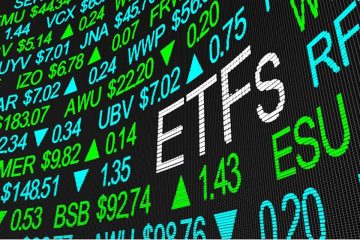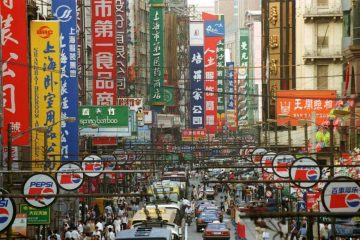What the sliding lira and economy mean for Turkey’s banks
THESE are glorious days at Recep Tayyip Erdogan Stadium, a tidy 14,000-seat football ground perched on a steep hillside in the Kasimpasa district of Istanbul—and named after a local lad who became president. Kasimpasa SK are top of the Super Lig, Turkey’s top division, having won their first four games of the season.
The economy over which Mr Erdogan presides, by contrast, is embroiled in a battle for survival. This year the lira has fallen by 40% against the dollar, tumbling especially hard last month after a diplomatic row with America. Inflation is nearly 18%. The central bank, pressed by Mr Erdogan to keep interest rates down, has been slow to react, but on September 13th, even as the president urged a cut, it raised its policy rate by 6.25 percentage points, much more than markets had expected, to 24%. The lira leapt in response.
Turkey’s economy is already slowing sharply. Year on year, growth fell from a breakneck 7.4% in the first quarter to 5.2% in the second. GDP may shrink in the closing months of 2018. The credit that fuelled the boom—much of it from abroad, pushing the current-account deficit to 6% of GDP—is drying up. Adjusted for inflation, bank lending is declining. Even big companies are being quoted borrowing rates of 35%.
Such a sudden halt often spells trouble for banks. Warning signs are flashing. Listed banks’ share prices have fallen by more than 40% this year. Those of Western banks with stakes in Turkish ones, such as Spain’s BBVA (which owns half of Garanti) and Italy’s UniCredit (which has an indirect 40% share of Yapi Kredi), have also wobbled. Last month Moody’s, a rating agency, downgraded 18 Turkish lenders.
Against that, by the usual measures Turkey’s banks meet the crisis in decent shape. Their ratios of equity to risk-weighted assets are well above regulatory floors, implying that they can absorb some blows. They have ample liquidity. They have hitherto enjoyed returns on equity in the mid-teens. Sam Goodacre of J.P. Morgan says that their net interest margins, at 4% or so, are thick enough to cope with higher funding costs.
How much trouble they will get into depends largely on two things. One is the willingness of foreign lenders to keep supplying them with funds. Turkish banks have borrowed lots from abroad. Some of that money has been lent to Turkish companies eager for cheap dollars and euros. Some has been swapped into lira, to meet demand for lira loans, which far exceed lira deposits. Regulation obliges the banks to limit their own exposure to currency risk, but foreign lenders may fear that the ultimate borrowers will default. About $ 100bn of the banks’ foreign debt falls due within a year. A bit more than $ 20bn in loans, including syndicated loans raised from dozens of banks, must be repaid or rolled over by the end of 2018 (see chart on previous page).
A banker involved in the market says that the cost of syndicated loans has doubled in the second half of the year, albeit from a low base. The banks are unlikely to be able to roll over all the maturing loans. But they have plenty of liquidity to make up the shortfall. And the foreign lenders they have dealt with for a long time are likely to keep supporting their core relationships. Mr Goodacre notes that Akbank, a leading bank with $ 940m of debt maturing this month, has relationships with 300 foreign banks, of which nearly 40 lent to it in a syndicate this time last year.
Slow motion
The other factor is how much of the debt owed to them by Turkish companies turns bad. For several years firms have been borrowing dollars and euros at ultra-low post-crisis interest rates. The lira’s fall has made those debts much costlier. To be sure, some borrowers earn foreign currency. Others have hedges—some developers of shopping malls have obliged retailers to pay rent in dollars, for example. But plenty do not. And if shopkeepers cannot pay the rent, eventually their landlords suffer too.
For now, banks’ bad-loan ratios are only about 3%, piddling by Greek or Italian standards. State banks report lower figures than private lenders, which may be misleading. State banks were keener to lend to small firms under the government’s credit-guarantee fund, a scheme intended to keep the economy cooking. The ratios look sure to rise, but that will take a while.
Supervisors have bought the banks time. They have softened rules on potentially bad loans, and delayed the revaluation of foreign-currency loans in lira, which would have dented banks’ capital ratios. But had it not been for Mr Erdogan, questions about Turkey’s banks might not have arisen at all. Since America’s Federal Reserve started to unwind quantitative easing in 2014, the days of ultra-cheap money in emerging markets have been numbered. Rather than accept that, and a gradual slowdown, Mr Erdogan has risked running Turkey into a wall.
By facing down a coup in 2016, and winning a subsequent election and referendum to tighten his grip on power, he has changed the rules of Turkish politics. But he cannot change the laws of economics, any more than those of football.
This article appeared in the Finance and economics section of the print edition under the headline “Offside”





